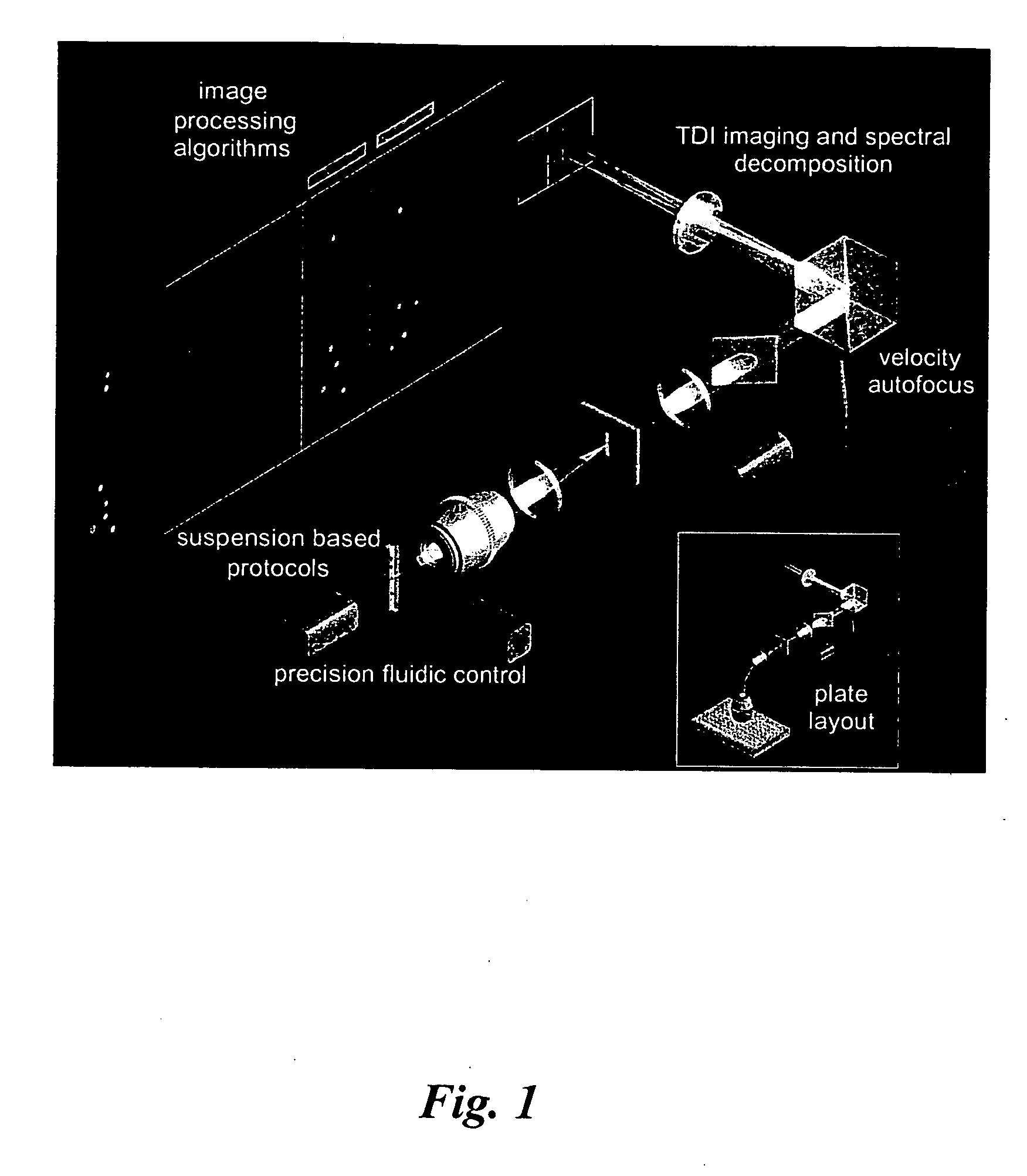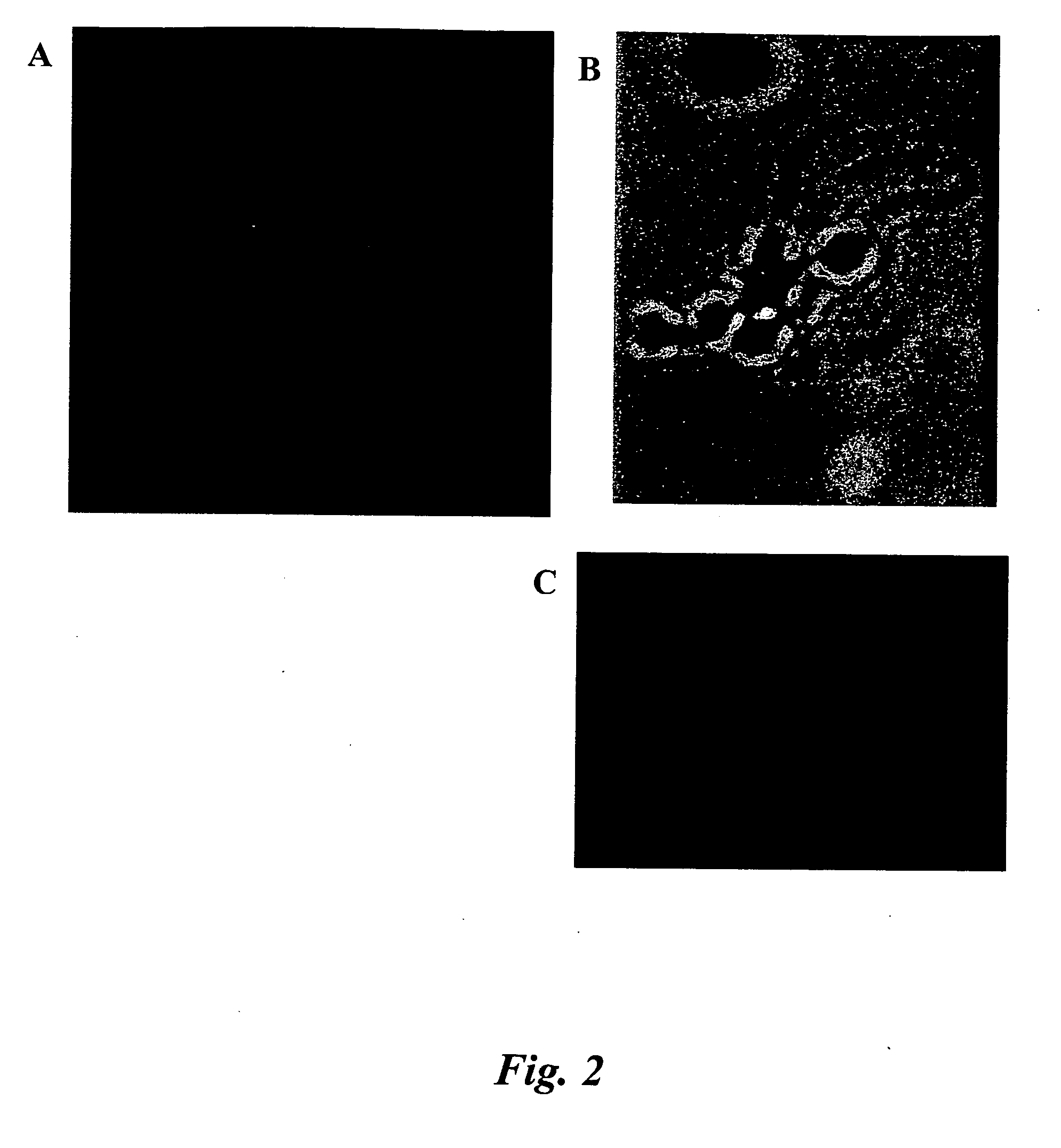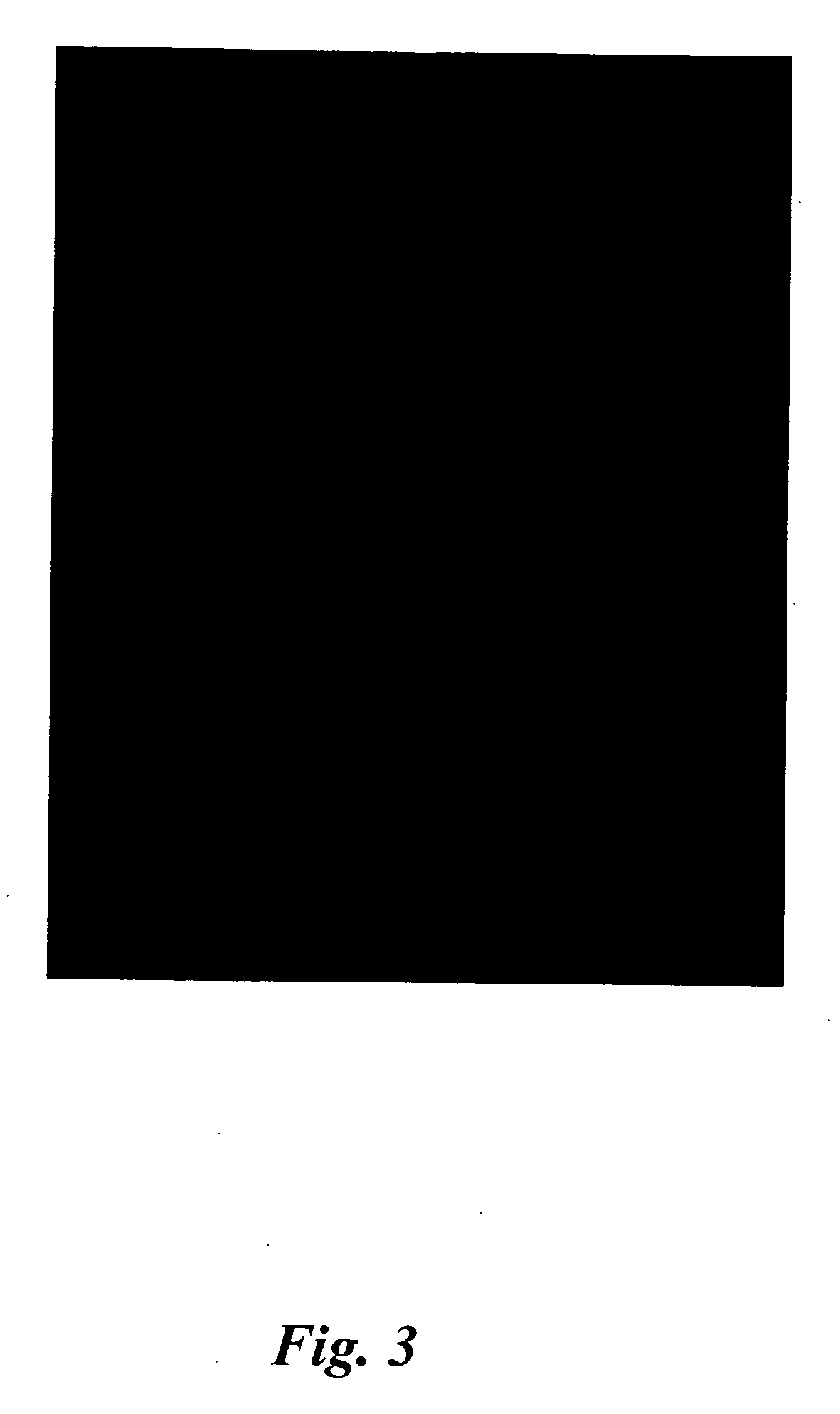Methods for preparing and analyzing cells having chromosomal abnormalities
a chromosomal abnormality and cell technology, applied in the field of preparing and analyzing cells with chromosomal abnormalities, can solve the problems of limited field of view and image quality, laborious, slow and laborious study of germ line aneuploidy,
- Summary
- Abstract
- Description
- Claims
- Application Information
AI Technical Summary
Benefits of technology
Problems solved by technology
Method used
Image
Examples
example 1
Evaluation of Fixatives for Sperm Cells
[0082] Preservation of cell integrity when analyzing cells by FISH-IS provides optimal results. This Example describes evaluation of various fixatives, including cross-linking fixatives and denaturing fixatives. The cross-linking fixative tested was the zero-length cross-linker formaldehyde, which may be obtained as paraformaldehyde powder or as a liquid product from various commercial vendors (e.g., Fix and Perm® Solution A, Caltag Laboratories, Burlingame, Calif.).
[0083] Several experiments were performed with variations of the procedure for preparing sperm cells for hybridization with a probe. Briefly, the basic procedure included treating sperm cells with dithiothreitol (DTT), followed by centrifugation; treating the cells with lithium diiodosalicylate; removing the cells from the lithium diiodosalicylate by centrifugation; fixing the cells; centrifuging and washing the cells, and then performing a hybridization reaction. Despite varying ...
example 2
Preparation of Sperm Cells in Suspension Without Clumping
[0087] The yield and clumping problems associated with the hybridization step were subsequently examined. Whether losses were due to the high temperatures used during hybridization or to the use of formamide were investigated. Mock hybridizations were performed in which the hybridization mix was incubated at 37° C. overnight. The results showed that the losses were not dependent on temperature, but were likely caused by exposing cells to formamide.
[0088] Because formamide may denature surface proteins, the addition of a detergent during hybridization was examined to determine if the presence of a detergent would minimize cell loss due to clumping. In theory, cells should be relatively stable to detergent once they are fixed. Non-ionic detergents (Triton® and Tween®) and glycosides (e.g. saponin) most effectively minimized loss of sperm cells due to clumping of the cells. In certain embodiments, 1% Saponin was used.
[0089] In...
example 3
Efficient FISH-IS Procedure for Sperm Cells
[0090] The standard ImageStream® instrument uses six multi-spectral imaging channels as follows: Channel 1, 470-500 nm, darkfield laser side scatter channel (488 SSC); Channel 2, 400-470 nm, used for brightfield; Channel 3, 500-560 nm, used for brightfield, FITC, Alexa 488, GFP, Syto, or Spec.Green; Channel 4, 560-595 nm, used for brightfield, PE, or Cy-3; Channel 5, 595-660 nm, used for brightfield, 7-AAD, or Alexa610 / PE; and Channel 6, 660-730 nm, used for brightfield, PE-Cy5, Alexa680 / PE, Alexa647 / PE, PerCP, or Draq-5. The dyes listed for each channel represents a partial list of available 488 nm-excitable fluorescent dyes that can be detected in each channel. Because one channel is assigned to brightfield and a second channel is assigned to dark field (laser scatter), four channels remain available for distinct probes. See Table 1.
TABLE 1ImageStream ® Imagine Channels1Channel 1Channel 2Channel 3Channel 4Channel 5Channel 62470-500 nm4...
PUM
| Property | Measurement | Unit |
|---|---|---|
| Ratio | aaaaa | aaaaa |
| Heterogeneous phase system | aaaaa | aaaaa |
Abstract
Description
Claims
Application Information
 Login to View More
Login to View More - R&D
- Intellectual Property
- Life Sciences
- Materials
- Tech Scout
- Unparalleled Data Quality
- Higher Quality Content
- 60% Fewer Hallucinations
Browse by: Latest US Patents, China's latest patents, Technical Efficacy Thesaurus, Application Domain, Technology Topic, Popular Technical Reports.
© 2025 PatSnap. All rights reserved.Legal|Privacy policy|Modern Slavery Act Transparency Statement|Sitemap|About US| Contact US: help@patsnap.com



